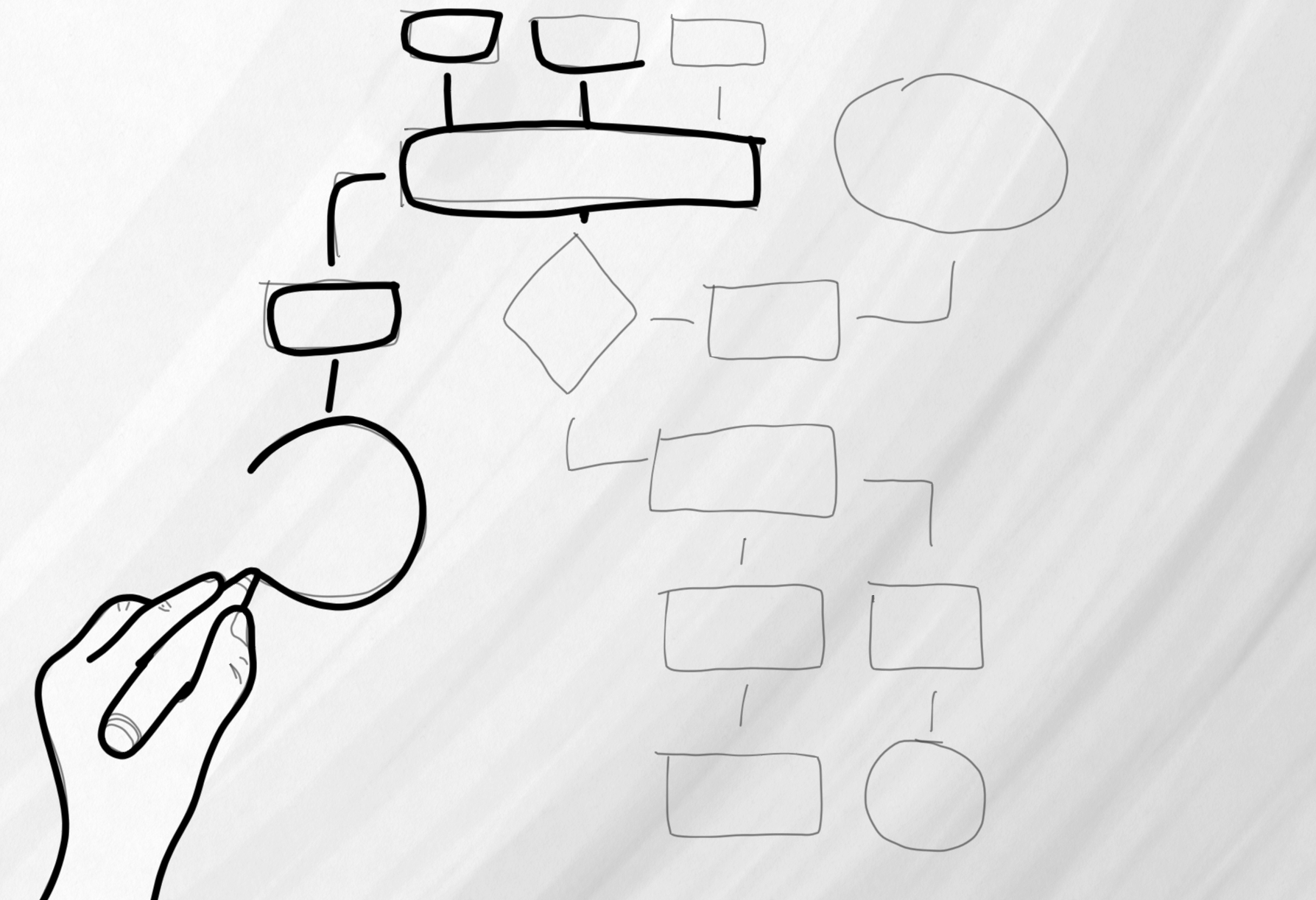Problem finding
To tackle complex challenges, I emphasise the problem-finding front end of project activity, as much as the more conventionally recognised problem-solving phases. This encompasses the inductive, exploratory, and often sensitive research activities that are prerequisites for describing a situation in its rich totality. This emphasis helps to both de-risk the process and to mitigate any over-reliance on preconceived ideas about the form, features, or functionality of a desired solution. Such fixation might serve to narrow the ambition of a piece of work by restricting it to an iteration of what has gone before, or it might waste valuable time and resources on misguided ideas.
By working to understand a context across micro-macro, concrete-abstract, and material-psychological levels, I aim to ensure that the right problems are addressed in a way that accommodates the resources and constraints of a given project. This maximises the chances of enacting significant change via original and potentially surprising outcomes, all whilst maintaining a strict focus on safe, feasible, and achievable goals.
In the face of unavoidable and necessary obstacles that are fixed by the constraints of a given context and capabilities of a given intervention, and where only incremental change seems possible, I advocate for centring the end-user’s emotional experience because it is a rich source of opportunities for more radical innovation. I examine situations from a human perspective to identify novel frames for viable solution spaces. This approach places behaviour, cognition, and affect at the core of my design and research practice, and relates these otherwise ephemeral concepts to concrete client goals.
Framing innovation
When a radically innovative new technology is made available to, or indeed deliberately targets, a particular context, my approach can de-risk its introduction by ensuring a good fit with existing techniques, systems, and requirements. This is typified by my contributions to making 3D-printed surgical devices a safe and effective part of routine clinical practice within the UK National Health Service. Even when a situation is not subject to major technical leaps, my approach to problem-finding has nevertheless enabled the pursuit of innovative outputs by developing new product meanings. These altered meanings have succeeded in creating more favourable responses from end-users, be they patients, surgeons, or nursing staff.
Understanding and framing design contexts often requires the acknowledgement of, and reconciliation with, contradictions in the structure of design problems themselves, especially where the proximate causes of a given challenge cannot be realistically avoided. Recognising dialectically opposed forces, unravelling necessary factors from contingent factors, and using evidence to justify a new frame, all require the description and analysis of a context in detail. I have made extensive use of data collection tools including observations, shadowing, participatory action research, interviews, focus groups, workshops, speak-aloud protocols, online ethnography, and systematic and narrative literature reviews. I have used content and thematic analyses, conceptual modelling, simulations, pseudo-experiments, time-and-motion studies, and basic health economics approaches to analyse these data.
This is best exemplified by my contributions to the field of Mechanical Circulatory Support (MCS), where a mechanical pump is used to replace some or all of a failing heart. There, I unearthed significant unaddressed emotional needs that profoundly affected the day-to-day emotional wellbeing of patients and their caregivers. These were overlooked during the development of previous generations of MCS devices, because they seemed unrelated to the more immediate biomechanical goals of the high-tech treatment. However, I revealed how emotional wellbeing is inherently linked to proper product use for patients who are often vulnerable and anxious, and who are compelled to adhere to strict monitoring and maintenance procedures. Stress and alienation made them prone to accidentally misusing their critical life support devices. I related everyday experience to emotion, cognition, and correct device operation to justify a major strategic shift in the design of next-generation MCS devices.
Translation and communication
I am driven by a desire for precision when communicating aims, justifying methods, and evaluating success. This meticulous approach has helped me to bridge significant gaps in language, customs, and interdisciplinary perceptions between project stakeholders. This is best represented by my time spent embedded in a hospital laboratory where I observed surgeries, analysed craft-based manufacturing techniques, and provided advice on digitised improvements. I synthesised myriad new ideas on the part of clinicians with the need for safety and risk mitigation, by considering contingencies for problems that arise from the high-pressure realities of the operating theatre. My measured approach to managing change makes assumptions, commonalities, and conflicts explicit, often by using graphical or schematic representations to communicate a design context in a consistent way.
With a solid foundation of empirical evidence, I create propositions that follow best practice by focusing on the “why” of a particular need rather than the “what”. I translate these propositions into design briefs by tailoring narratives and presentations to the preferences of the client and design team. This is important, because it is a challenge to brief designers with clarity about projects that have radical aims, or that demand a high degree of creativity. Briefing often requires translating complex scientific or technological discoveries into practice, and introducing design paradigms into more positivist, deductive, and structured environments. My analysis of briefs across seven distinct functional scales has enabled me to understand how to balance the communication of opportunities versus constraints.





